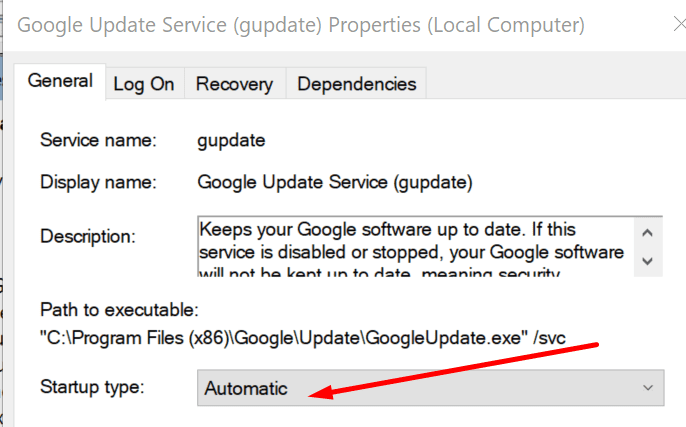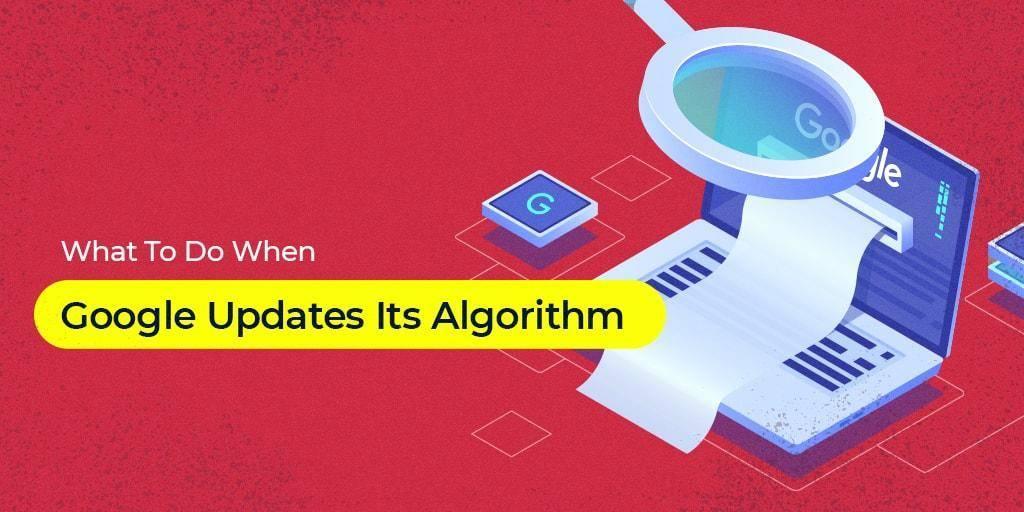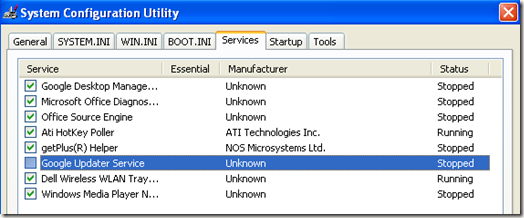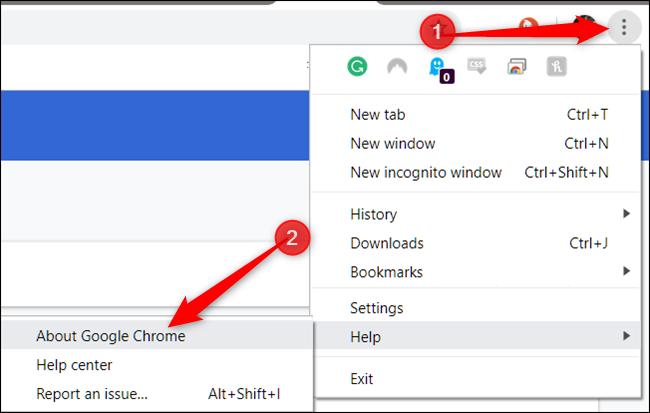How to disable Google Chrome Automatic Update
Google Update Troubleshooting
We all want to keep our Google Search Rankings as high as possible, and one of the most important steps towards achieving this is maintaining an up-to-date website. Regularly updating the content of your site is key to keeping it active and engaging with Google. With each major update from Google, however, the algorithms change, and that can lead to potential glitches or issues with your Search Rankings. Here, we’ll look at the key issues you’ll face when trying to troubleshoot Google updates and how to resolve them.
Recognizing Issues with Google Updates
The first step in troubleshooting Google updates is to recognize there’s an issue in the first place. Obviously, a decline in rankings is a sure sign – but sometimes the drop can be minor or happen slowly, making it difficult to notice. This is why it’s important to use tools such as search console to monitor changes week to week. If there is a noticeable difference in your rankings or traffic – such as a sudden dip or long-term trend – then we know that there is an issue that needs addressing.
Flushing Out the Changes
Once we’ve recognized that there are problems due to a Google update, the next step to take is to flush out what has changed. We need to identify what Google has added to the algorithm and pinpoint where these changes are affecting the SEO of our site. One way of doing this is to compare our ranking positions before the update and they after. If there has been a sharp decline in particular areas – such as titles, meta descriptions or page speed – we will know what to tackle first.
Updating Your Content and Site
Once we’ve identified what needs refreshing, the next step is to update our site accordingly. We must adapt our approach so as to please Google’s new standards. This means changing things such as titles and meta descriptions, improving page speed, and adapting our on-page SEO strategy. Once these changes have been made, the site should be tested thoroughly to ensure that the update is successful.
Optimizing Your Pages
To get the best out of a Google update, we must ensure that each page of our website is optimized correctly. This means providing high-quality content, optimizing page elements for SEO, ensuring images are of good quality and size, and also paying attention to any external linking. All of these changes are designed to increase the ranking potential of your pages and put you in the best possible position when it comes to a Google update.
Getting the Most Out of Updates
Google spends a lot of time and money refining their algorithms, and so it makes sense for us to use this to our advantage where possible. To make the most out of a Google update, we must be proactive rather than reactive. Keeping up with updates and responding to them by adapting our SEO strategies can put us ahead of our competitors and maintain our rankings in the long term.
Conclusion
Troubleshooting Google updates can be challenging but not impossible. By recognizing the issues, looking into what has changed, updating our content and site, and optimizing our pages, we can stay ahead of the game and ensure our website ranks highly. With patience and perseverance, maintaining good rankings in Google should be a breeze.

Troubleshooting the Recent Google Updates: What You Need to Know
Google is constantly releasing updates to its search algorithms to ensure users have the best experience possible. These updates can have a dramatic effect on webpages, so understanding how to troubleshoot them and make sure your website remains visible is important. Here, we take a look at some of the recent Google updates and offer some tips for troubleshooting them.
1. Core Update Rollouts
Whenever Google rolls out a new algorithm update, it's important to check the impact it has had on your site. This can be done through webmaster tools, which will show you which pages have taken a hit, as well as identifying any areas where further optimization is needed.
2. Mobile-First Indexing
Google is now using a mobile-first indexing system for pages, so having a site that looks good on mobile devices is essential. Make sure that your pages are properly formatted to fit on a mobile device and the content is easy to read. Also check that CSS and Javascript files are optimized for faster loading times.
3. Page Speed Scores
Google also measures the loading speeds of pages for their search results, so it’s important to understand how this works and optimize your page accordingly. Check the page speed score for each page and see what areas need improvement. Try reducing the size of images, eliminating unnecessary code and compressing files if necessary.
4. User Experience
A key component of recent Google updates is user experience. Websites should be easy to navigate, with clear menu structures and information presented in an appropriate order. Content should also be optimised for keyword searches, with an appropriate keyword density for search engines.
5. Schema Markup
Incorporating structured data into your website can help to better inform search engines about the content. Schema markup is particularly useful for local businesses, as it gives them the chance to appear in ‘rich snippets’ in the search engine results pages.
6. Security and SSL Certification
Ensuring that your website is secure is increasingly important for SEO. Sites should have an SSL certificate and use secure hosting services. This not only helps with SEO, but also ensures user data is properly protected.
7. HTTPS Usage
Using the HTTPS protocol is now mandatory for any website that collects information from visitors, and is automatically displayed in search engine results. Make sure that your site is configured to use HTTPS whenever possible.
8. Penguin 4.0 Penalty
The Penguin 4.0 penalty is designed to punish websites with bad link profiles, so identify any low-quality links that may have been included and remove or disavow them. Cleaning up your link profile can help to improve rankings and avoid potential penalties.
9. Quality Content
The quality of content on your website matters more than ever before. A page should have enough text to accurately describes its content, as well as formatting to highlight the most important points. Use heading tags to structure content and avoid overusing keyword phrases to ensure you get the most out of your content.
10.Social Signals
Including social sharing buttons on a website can help increase the number of interactions users have with the content, and these social signals are increasingly becoming factored into SEO algorithms.
11. Natural Link Building
Organic link building is essential for SEO, as it improves visibility and increases the authority of a website. Establish relationships with other websites and influencers to build organic links, and don't be afraid to ask for links where appropriate.
12. Authority
When trying to troubleshoot an SEO problem, it’s important to consider the authority of the site in question. Authority is judged on factors such as the age of the domain, the number of inbound links, and the quality of content. It will take time to increase the authority of a website, but doing so will eventually lead to better rankings.
Conclusion
Understanding recent Google updates is essential for successful SEO, and knowing how to troubleshoot them can help prevent any disasters. By following the advice outlined above you should be able to ensure your website is well prepared for upcoming algorithm changes.

Google Update Troubleshooting – A Comprehensive Guide
Are you having trouble with Google Updates? You’re not the only one! Many webmasters and website owners have experienced disruptions to their sites due to Google’s regular series of algorithm updates. To help you understand why this is happening, and also to provide answers as to how to fix any issues caused by these updates, we’ve put together a comprehensive guide for Google Update troubleshooting.
What Are Google Updates?
Google releases updates from time to time that affect the way websites are ranked within their search results. These changes are meant to improve the relevancy of the search results so that when users search, they find the most helpful and informative pages. Unfortunately, every time Google issues an update, some websites can get negatively impacted in terms of rankings, resulting in decreased traffic or even complete disappearance from search results.
Why Do Google Updates Create Problems?
These regular updates are necessary for Google to continue to provide relevant search results, but sometimes it can lead to problems. Google updates can create issues for website owners if their content is outdated, low-quality, or doesn't meet the technical SEO requirements set by Google. Sites may experience a decrease in their ranking if they don't have sufficient backlinks or are not optimized for mobile devices.
Which Updates Have Been Released Recently?
In the past few years Google has released several major updates, such as: Fred, Possum, Penguin 4.0, Hummingbird, and RankBrain. Each update has had a specific intention behind it, such as targeting spam sites or providing more accurate search results.
How Can I Test My Site for Issues?
The best way to test your site for any issues related to Google updates is to use a tool like ScreamingFrog. This tool will crawl through your website's pages and locate any potential errors that could be affecting your rankings. Additionally, it will identify any missing elements that can help improve your SEO scores, such as wrong titles, broken links, duplicate content, and more.
How Can I Fix Potential Issues?
Once you've identified the potential issues on your site caused by recent Google updates, the next step is to take action. For example, if you've noticed broken links or images, you'll need to update or replace them. If you've noticed that your content is outdated, you should focus on publishing fresh, up-to-date information on your website. Additionally, you may need to adjust your site's design and structure in order to make it mobile-friendly or add additional backlinks to external sources.
What Can I Do to Prepare My Site for Future Updates?
The key to staying ahead of the game is to always be proactive. First and foremost, you should ensure your content is up-to-date and relevant. Additionally, stay updated on the latest algorithm updates from Google and make sure your website is compliant with any technical changes. Lastly, optimize your website for mobile devices and continuously add new backlinks from other reputable websites.
Conclusion
Google Updates are crucial to keeping the search engine up-to-date and returning relevant results. However, these updates can technically cause issues with your website. Utilizing a tool like ScreamingFrog can help identify any potential errors that can then be fixed. Additionally, by maintaining an updated website and staying aware of Google's updates, you can ensure that your site remains unaffected and continues to reach success.

3 Ways to Update Google Chrome - wikiHow
Google Update Troubleshooting
Google updates can be a real headache for webmasters and SEO experts.Figuring out the cause of any sudden drop in rankings or loss of traffic is complex and time consuming. So, how can you quickly troubleshoot and diagnose Google update issues? Here we will provide tips and best practices on how to approach troubleshooting a potential Google update.
Identify If It’s an Algorithmic or Manual Penalty
The first step in troubleshooting Google update issues is to distinguish between an algorithmic penalty and manual penalty by Google. An algorithmic penalty is when your website experiences a sudden ranking drop due to a change or update in Google’s algorithm or search engine result pages (SERPs). On the other hand, a manual penalty is when your website receives a penalty notification from Google once you become aware of it.
Analyze Your Traffic Data with Google Analytics
When attempting to troubleshoot a major Google update, the best place to start is by analyzing your website’s traffic data in Google Analytics. With a few clicks you can see when exactly the traffic drop occurred, which page it effecting and what percentage of visitors experienced the drop. This data is key in helping you determine if the decrease was in fact caused by a Google update.
Check If Rankings Have Shifted
If your website experiences a sudden drop in traffic your next step should be to see if there has been a similar decrease in the ranking of your website’s pages. The easiest way to do this is by using a tool like Moz's Rank Tracker, which tracks where your website appears in the SERPs. If there has been a significant drop in the rankings then this indicates the issue may be caused by a Google update.
Carefully Analyze Any Other Changes You Made Recently
Another important step in troubleshooting Google update issues is to think back and analyze any recent changes or additions you made to your website. Perhaps the Google update targeted specific content or a website layout element that you changed recently. It is important to make sure that all recent changes are compliant with Google’s guidelines and that no malicious code was included in the change.
Look For Unnatural Link Patterns
One major factor in any recent Google update is usually related to unnatural link patterns. Any drastic increase or decrease in the number of inbound links or the type of links pointing to your website can set off an alarm for Google’s algorithm and lead to a penalty. To verify this, use a tool like Moz’s Link Explorer and review the link acquisition trend over the past few months.
Ensure Your Content Is Unique and Relevant
Finally, keep an eye on your website’s content to ensure that it’s unique and relevant. Google values relevance and any low-quality or duplicate content could result in a penalty. Use tools like Copyscape to detect plagiarism or borrowed content. Additionally, review the content for changes that may have been inadvertently made that may not be compliant with Google’s standards.
Conclusion
Troubleshooting Google update penalties can be a difficult and time consuming process. However, by following the tips outlined above webmasters and SEO experts can easily identify potential Google update issues and take the necessary steps to rectify them. Being proactive and regularly checking for any changes that may lead to a penalty can help to prevent the issue from causing serious harm to your website.




